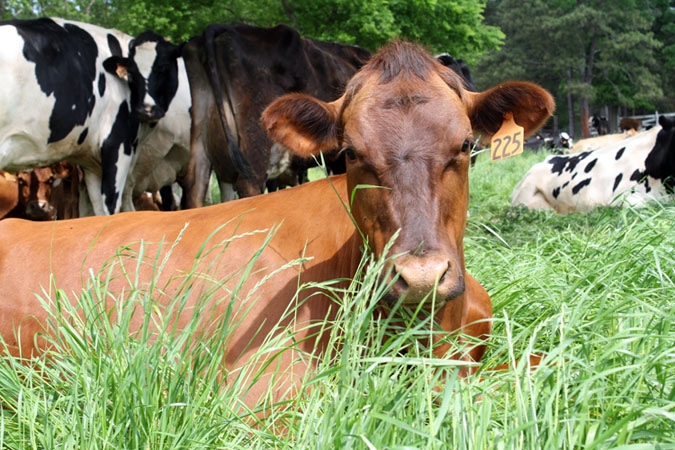September 2, 2013

With the rising cost and limited availability of hay over the past few years, Kentucky cattle farmers have been looking for ways to extend the grazing season and reduce the need to feed hay during the fall/winter months.
Stockpiling forage is one way to meet both of these objectives. The definition of stockpiling is to “grow pasture for a later use.”
The species of forage that respond best to stockpiling will vary between different regions of the US. In Kentucky, cool-season grasses respond favorably to nitrogen applications in the fall. Tall Fescue is especially renowned for stockpiling because of its inherent ability to maintain high levels of nutrients during the winter months than other cool-season species.
Stockpiled forages typically receive nitrogen in late July/August and grazing is deferred from these areas until the late fall and early winter when the available forage in other pastures becomes limiting. Having a source of forage available for grazing during the winter months lowers the amount of hay fed and subsequently reduces the financial investment by the producer.
With this year’s nitrogen and hay prices at or above $60 per ton, it has been shown stockpiling tall fescue offers moderate savings at a high forage growth rate in pure stands. A high growth rate means that tall fescue responded very well to nitrogen applications due to favorable soil type and moisture.
First you must decide which fields to apply nitrogen. Growth responses to nitrogen rely heavily on soil moisture content. Fields that are deeper and are less drought prone are the best candidates. Areas that receive more rainfall will have a higher growth response to nitrogen applications. Soil moisture will likely be adequate for stockpiling for most areas of Kentucky due to the abundant rainfall during the growing season.
While selecting pastures for stockpiling, target those with thick stands of tall fescue, and low amounts of species that are undesirable or less responsive to stockpiling, such as weeds or clover.
To learn more about fall forage management in Kentucky or to read this entire article, click here.
You May Also Like




